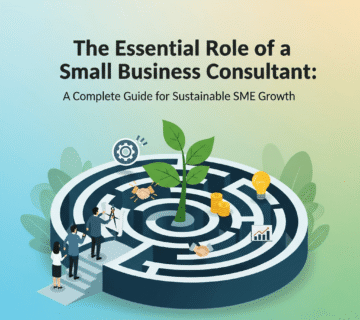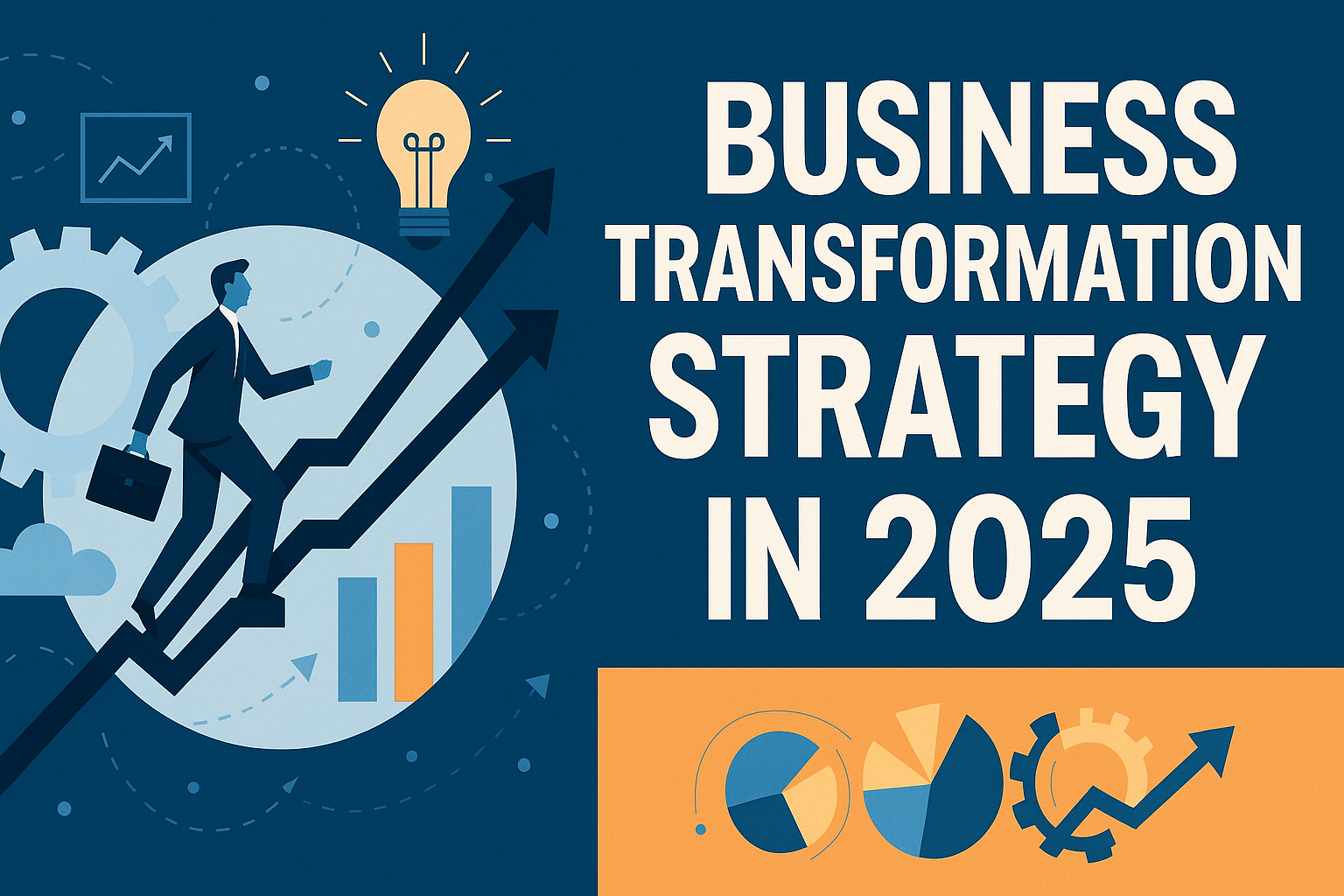Table of Contents
ToggleIn an era defined by rapid technological advancement and shifting market dynamics, digital transformation in business has evolved from a strategic option to an absolute necessity.
At Trax Group, we’ve witnessed how organizations that proactively embrace transformation don’t just survive—they thrive, outperforming competitors and setting new industry standards. This comprehensive guide demystifies the transformation process, providing actionable insights for leaders ready to steer their organizations toward lasting success.
Understanding digital transformation in business: More Than Just Change
Business transformation represents a fundamental reimagining of how an organization operates, delivers value, and positions itself in the marketplace. Unlike incremental improvements or routine changes, true transformation involves a holistic redesign of business models, processes, technologies, and cultures. It’s about creating an organization that’s not just better, but fundamentally different—and better equipped for the future.
Key characteristics that define digital transformation in business include:
Strategic repositioning in the market landscape
Organization-wide impact across all departments
Technology-enabled reinvention of operations
Cultural evolution and behavioral change
Future-proofing for long-term relevance
The Four Pillars of digital transformation in business
Every successful transformation addresses multiple dimensions of the organization. Here are the primary types of transformation we help clients navigate at Trax Group:
1. Digital Transformation: Leveraging Technology for Competitive Advantage
Digital transformation goes beyond implementing new software—it’s about fundamentally changing how technology enables your business strategy. This might involve migrating to cloud-based systems, implementing AI and automation, or developing new digital revenue streams. The goal isn’t just technological upgrade but creating new ways of creating customer value.
2. Organizational Transformation: Reshaping Your People and Culture
This dimension focuses on the human side of change. Whether it’s restructuring teams, developing new leadership capabilities, or shifting organizational culture, this transformation ensures your people are equipped and motivated to support new ways of working. We help organizations build cultures that embrace change rather than resist it.
3. Process Transformation: Optimizing Operations for Excellence
Process transformation involves radically redesigning core business operations to achieve dramatic improvements in efficiency, quality, and customer satisfaction. Using methodologies like Lean Six Sigma and business process reengineering, we help organizations eliminate waste, reduce cycle times, and create more value with fewer resources.
4. Business Model Transformation: Reinventing Your Value Proposition
The most radical form of transformation, this involves changing how your organization creates, delivers, and captures value. This might mean shifting from products to services, developing platform-based business models, or completely rethinking your customer relationships.
Our Proven Transformation Framework
At Trax Group, we’ve developed a structured approach that guides organizations through successful transformation:
Phase 1: Assessment and Vision Setting
We begin by conducting a comprehensive diagnostic of your current state—evaluating strategy, operations, technology, and culture. This isn’t just about identifying problems but understanding opportunities. Together, we define a compelling transformation vision and establish clear, measurable objectives that align with your long-term business strategy.
Phase 2: Strategic Planning and Roadmapping
With a clear vision in place, we develop a detailed transformation architecture. This includes:
Specific initiatives with defined timelines and dependencies
Resource requirements and investment planning
Risk assessment and mitigation strategies
Governance structures and decision-making protocols
Phase 3: Leadership Alignment and Capability Building
Transformation succeeds or fails based on leadership commitment. We work with your executive team to ensure complete alignment and visible sponsorship. This includes developing transformation leadership capabilities and creating cross-functional teams with clear accountability.
Phase 4: Implementation and Execution
We roll out transformation initiatives in manageable phases, maintaining business continuity while driving change. Our approach emphasizes:
Phased implementation with clear milestones
Robust program management and coordination
Flexibility to adapt to emerging challenges
Continuous communication and stakeholder engagement
Phase 5: Sustainment and Continuous Improvement
Transformation doesn’t end with implementation. We help organizations embed changes into their daily operations, monitor performance, and build capabilities for ongoing improvement. This ensures that transformation benefits are sustained long after the initial implementation.
Navigating Common Transformation Challenges
Through our work with diverse organizations, we’ve identified several common challenges—and developed strategies to overcome them:
Resistance to Change: The Human Dimension
Even the most well-designed transformations can falter due to organizational resistance. We address this through comprehensive change management strategies that include clear communication, meaningful involvement, and adequate support for employees at all levels.
Resource Constraints: Doing More with Less
Many organizations struggle with limited budgets, competing priorities, and capacity constraints. We help clients prioritize initiatives based on impact and feasibility, and develop creative resource strategies that maximize transformation value.
Measurement Difficulties: Proving the Value
Tracking transformation progress and demonstrating ROI can be challenging. We establish balanced measurement systems that capture both leading indicators (like adoption rates and employee engagement) and lagging indicators (like financial performance and customer satisfaction).
Measuring What Matters: Tracking Transformation Success
Effective transformation requires measuring success across multiple dimensions:
Financial Metrics
Revenue growth and profitability
Cost reduction and efficiency gains
Return on transformation investment
Economic value added
Operational Indicators
Process cycle times and quality metrics
Productivity improvements
Resource utilization rates
Innovation pipeline strength
Customer Impact
Satisfaction and loyalty scores
Market share and competitive positioning
Customer lifetime value
Service delivery improvements
Organizational Health
Employee engagement and retention
Leadership effectiveness
Cultural evolution
Capability development
Why Organizations Choose Trax Group for Their Transformation Journey
Our approach combines strategic vision with practical execution, delivering transformations that create lasting value:
Deep Expertise Across Industries
With experience spanning multiple sectors and organization sizes, we bring valuable perspectives and proven practices to every engagement. Our consultants understand both the universal principles of transformation and the unique challenges of different industries.
Integrated Methodology
Unlike consultancies that focus narrowly on technology or process, we address all dimensions of transformation simultaneously. This integrated approach ensures that changes in one area support and reinforce changes in others.
Focus on Sustainable Results
We’re committed to building capabilities, not just delivering projects. Our goal is to leave your organization stronger, more agile, and better equipped to navigate future changes long after our engagement ends.
Transformation Success Stories
Many companies have successfully transformed their businesses. Here are three notable examples:
Netflix
Netflix Started as a DVD rental service, moved to streaming, and now creates its own content. They used data and technology to guide their transformation.
Microsoft
Microsoft has changed from selling software licenses to offering cloud services. They also transformed their company culture to focus on learning and growth.
Starbucks
Starbucks has enhanced customer loyalty through digital programs and mobile ordering. They used technology to improve the customer experience while keeping their core business strong.
These examples show that with the right strategy, businesses can successfully adapt and grow. At Trax Group, we help companies achieve similar transformation success.
Conclusion: Transform Your Business for Lasting Success
Business transformation is essential in today’s evolving market landscape. It requires a strategic approach that integrates people, processes, and technology. While challenging, transformation leads to greater agility, improved performance, and sustainable growth.
Successful transformation demands strong leadership, clear vision, and company-wide commitment. By learning from proven examples and following structured frameworks, your organization can effectively navigate this journey.
Ready to transform your business? Trax Group provides expert guidance to help you build a more resilient and successful organization.
F.A.Qs
Frequently asked questions
Change management handles specific initiatives, while business transformation is broad and holistic.
It depends—some last 6–12 months, others take years. Global corporations often spend 3–5 years in large-scale transformations.
Resistance to change, poor leadership, and technological failures.
Yes. They can adopt affordable cloud tools, automate processes, and focus on customer-centric strategies.
No. Digital transformation is one component of business transformation.
Other Questions
General questions
Leaders set vision, allocate resources, and inspire employees. Without leadership, initiatives fail.
KPIs include revenue growth, market share, customer satisfaction, and innovation rate.
Banking, healthcare, retail, logistics, and manufacturing.
Kodak and Nokia are classic examples of missed transformation opportunities.
AI, sustainability, and global collaboration will shape the next era of transformation.







No comment